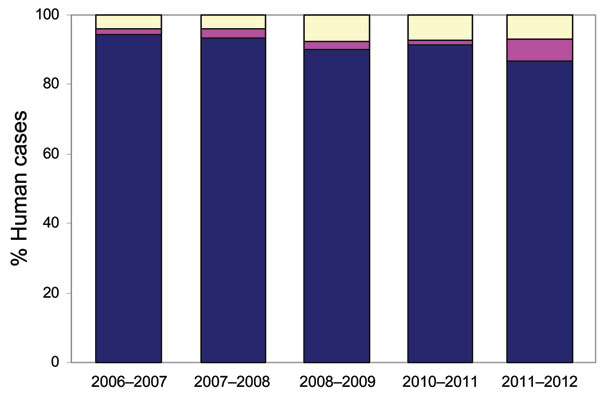Volume 18, Number 3—March 2012
Research
Pathogenic Potential to Humans of Bovine Escherichia coli O26, Scotland
Figure 5

Figure 5. Escherichia coli O157 and Shiga toxin–producing non-O157 E. coli infection in humans in Scotland identified or confirmed by the Scottish E. coli O157/VTEC Reference Laboratory, Edinburgh, UK, by financial year (April–March). Samples include isolates, feces, and serum. Non-O157 isolates were serotyped by the Laboratory of Gastrointestinal Pathogens. Data are presented as percentage of all cases in humans that are E. coli O157 (blue), Shiga toxin-producing non-O157 (excluding E. coli O26) (yellow) and Shiga toxin–producing E. coli O26 (pink). The mean number of cases per financial year during 2006–2011 was 248 (221–275). This time frame was selected to ensure application of consistent method.
Page created: February 16, 2012
Page updated: February 16, 2012
Page reviewed: February 16, 2012
The conclusions, findings, and opinions expressed by authors contributing to this journal do not necessarily reflect the official position of the U.S. Department of Health and Human Services, the Public Health Service, the Centers for Disease Control and Prevention, or the authors' affiliated institutions. Use of trade names is for identification only and does not imply endorsement by any of the groups named above.